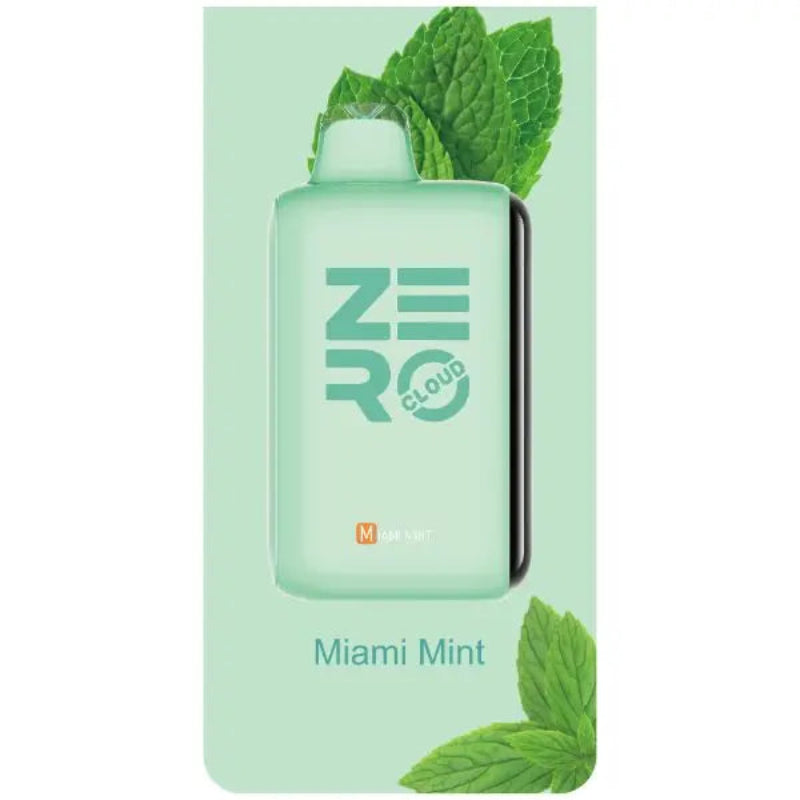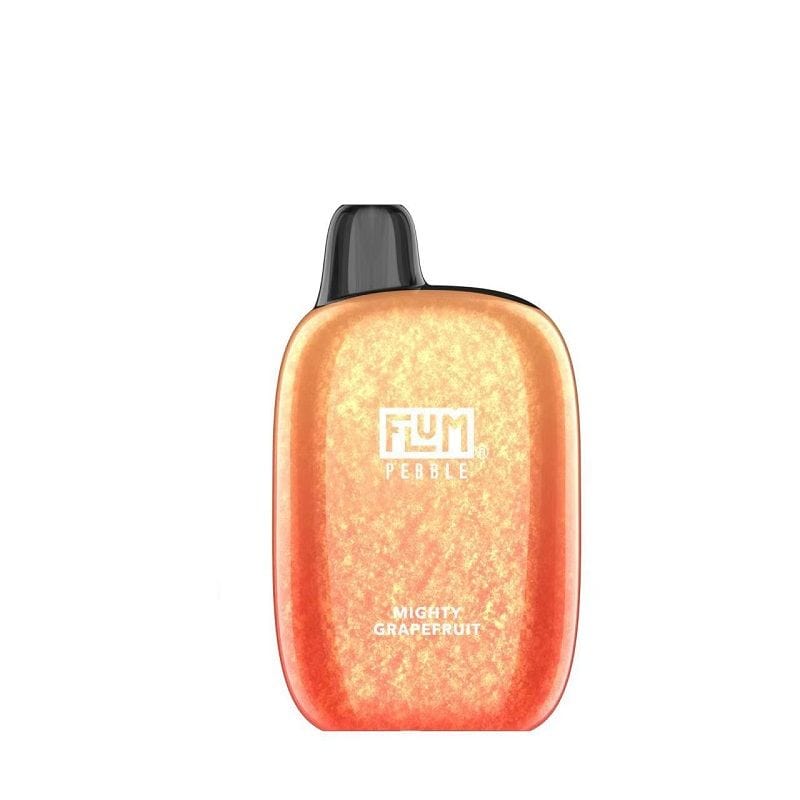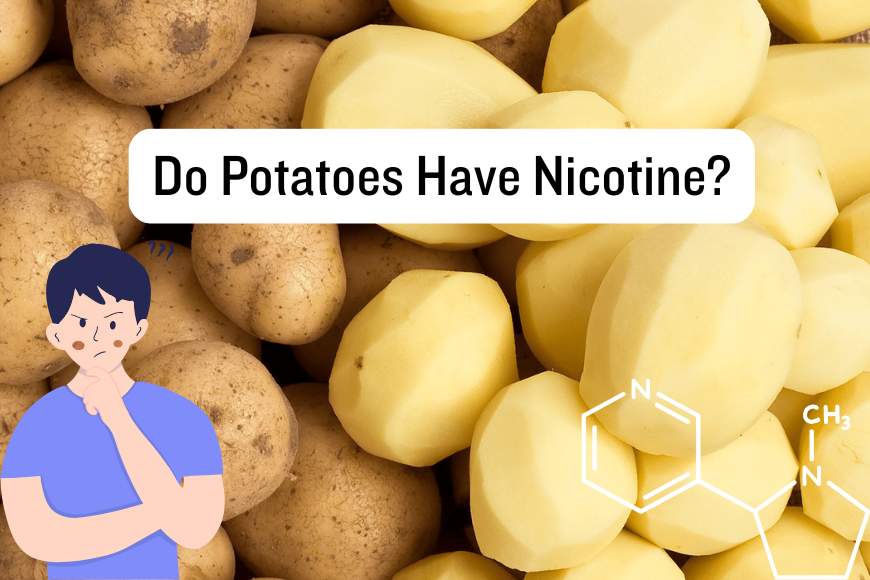What if I tell you that most foods you eat contain nicotine? You see, most times, when nicotine is mentioned, a lot of people start screaming “health hazards,” “side effects,” and all of that, but the truth is, nicotine on its own – even though addictive – is not harmful; it only becomes harmful when the consumer becomes overly addictive and dependent on it.
That said, do potatoes have nicotine? Well, yes, they do, but definitely not in the quantity you’ll get from vapes, pouches, and nicotine gums. Of course, aside from potatoes, there are other foods that have nicotine in them, and so, this article focuses on explaining how nicotine is present in most foods we eat.

Just a tip of the iceberg: Nicotine is naturally present in plants that belong to the Solanaceae (nightshades) family. Now, you can guess the foods that have nicotine present in them.
Key Notes:
· Trace nicotine levels in potatoes and related foods pose no health risk at conventional dietary levels.
· Removing potato skins significantly lowers the nicotine content.
· Standard cooking does not eliminate nicotine, but the variation is minimal and inconsequential.
· Global food safety bodies enforce strict residue limits to prevent pesticide-derived nicotine.
Do Potatoes Have Nicotine?
The simple answer is YES. Potatoes, like many plants in the Solanaceae (nightshade) family, naturally contain trace amounts of nicotine, with cooked potatoes averaging around 19.25µg of nicotine per kilogram of food. Other common foods—tomatoes (median 43.8µg/kg), bell peppers (median 102.1µg/kg), and aubergines (below quantification limits)—also contain nicotine levels.

You may think it’s only the nightshade plants that have traces of nicotine in them, well, nope; tea leaves contain between 0.011 and 0.694µg of nicotine per gram of dry weight, which remains stable through processing. However, these trace amounts are 100,000 to 1,000,000 times lower than in tobacco and vapes, and typical dietary intake is vastly lower too.
What Exactly is Nicotine?
Nicotine is a naturally occurring alkaloid predominantly synthesized by plants in the nightshade family (Solanaceae) as a defense mechanism against herbivores and insects. Chemically, it is a pyrrolidine-based compound that acts as a neurotoxin at high doses but as a stimulant at low concentrations in mammals. For the nightshade plants, nicotine acts as an agonist at nicotinic acetylcholine receptors, serving primarily as a natural insect deterrent. The thermal stability of nicotine ensures these trace levels persist through cooking and processing. So, it doesn’t matter how long you cook your potatoes or other foods that naturally contain nicotine; the nicotine in the foods won’t go away.

Nicotine’s Role in Plants
In Solanaceae species, nicotine functions primarily as a bioinsecticide, deterring pests by disrupting the plants’ nervous systems. This makes the plants survive in different environments where they are grown. Nicotine is heat-stable, but the concentrations may shift slightly depending on how it is cooked or prepared.
Nicotine in Potatoes
Potatoes (Solanum tuberosum), like their nightshade relatives, synthesize nicotine in trace quantities as part of their defense arsenal. This alkaloid is mostly localized in the skin and diminishes toward the flesh, helping the plant protect itself from vulnerable outer tissues.
Analyses indicate that cooked potatoes contain a median of 19.25µg of nicotine per kilogram of food. Fresh, uncooked potatoes may exhibit slightly different values, but most studies converge around 2–7µg/kg in raw tubers. For dietary risk assessments, a mean value of 4.5µg/kg is frequently applied.

Cooking does not significantly degrade nicotine due to its thermal stability; some processed forms, such as French fries or potato chips, even show marginal increases in detectable nicotine, likely due to moisture loss concentrating the alkaloid. Peeling potatoes removes most nicotine, as it is primarily in the skin layer.
Other Foods Containing Nicotine in the Nightshade Family
For sure, many other foods in the nightshade family contain nicotine as much as potatoes—some even more.
1. Tomatoes
Fresh, ripe tomatoes (Solanum lycopersicum) contain a median nicotine level of 43.8µg/kg, though unripe ones may have higher concentrations that decrease as the fruit matures. Processed products like tomato juice and sauce average around 29.7–5.7µg/kg, depending on the processing method.
2. Bell Peppers and Chili Peppers
Edible peppers (Capsicum spp.) have median nicotine levels of approximately 102.1µg/kg, with variation across cultivars and ripeness. Green peppers tend to have 7.7–9.2µg per gram (7,700–9,200µg/kg) in some measures, though laboratory medians are lower. Chili peppers follow similar patterns due to the shared lineage.
3. Aubergines (Eggplants)
Surprised? Well, you should, but yeah, eggplants (Solanum melongena) have nicotine, but the quantity isn’t identifiable, so it’s said that they have nicotine concentrations below quantification limits, which further implies they should have nicotine levels of less than 2–7µg/kg in fresh fruits.

Other Foods with Trace Nicotine that are not Nightshades
4. Tea Leaves
Tea (Camellia sinensis) is not a Solanaceae member, yet studies confirm nicotine contents of 0.011–0.694µg per gram of dry weight across the green, oolong, and black teas. These nicotine levels remain stable through fermentation and drying processes, with black teas often showing slightly higher averages.
5. Cocoa (and Chocolate)
Yeah, our favorite chocolate does contain roughly 7μg of nicotine per gram, and that’s in addition to the 2.3mg caffeine per gram content. Little wonder why it seems you’re addicted to chocolate and any stuff made with it? Well, just kidding, those nicotine levels in chocolates are still not significant enough to make you addicted to the substance—you love chocolates because it does taste real good and have a nice flavor.
Table Chart
|
Food |
Raw Nicotine Content (μg/g) |
|
Potatoes |
2–7 |
|
Tomatoes |
43.8 |
|
Bell Peppers |
102.1 |
|
Eggplant |
2–7 |
|
Tea (Black) |
0.011–0.694 |
|
Chocolate (Cocoa) |
7 |
Factors that may affect Nicotine Content in Foods
As hinted already, cooling and preparation methods have nothing on nicotine levels in foods they are found in, but then, there are actual factors that cause the levels to increase or decrease further.
1. Ripeness and Variety
Nicotine concentrations decrease in nightshade plants and fruits as they ripen. However, different cultivars may exhibit distinct alkaloid profiles, influenced by genetics, soil, and climate conditions.
2. Environment
The use of tobacco extracts as organic insecticides can introduce exogenous nicotine into non-tobacco crops, although there are now modern regulations that limit such practices—e.g., the EU maximum residue level of 0.01mg/kg. But then, some plants may secrete more nicotine contracted from nearby tobacco farms; this is especially common with tea plantations.
Health Implications
Well, because potatoes and some other meals have nicotine in them doesn’t mean you could get overdosed on nicotine by eating those meals. The average daily nicotine intake from foods that contain the chemical is estimated at 1,400–2,250ng from a varied diet, compared to roughly 100mg (100,000,000ng) delivered by a single cigarette—now, you can clearly see the margin is wide. Even with heavy consumption of nightshade vegetables, you can never get overdosed on nicotine as you would if you consume vapes and cigarettes heavily.
Dietary Nicotine
At microgram–level exposures, nicotine from foods does not significantly engage nicotinic receptors in humans and poses no addiction risk. Trace dietary nicotine has been epidemiologically associated with modest Parkinson’s disease risk reduction, though causality is unproven and likely driven by other phytochemicals.
Vaping Nicotine
Milligram–level exposures from e-cigarettes produce systemic nicotine levels comparable to tobacco cigarettes, with rapid receptor activation, potential dependence, and withdrawal phenomena. Nicotine salts and freebase formulations can alter delivery kinetics, further influencing dependence potential.
Physiological Impact
At dietary trace levels, nicotine does not produce stimulatory or addictive effects. Its presence is too low to engage nicotinic acetylcholine receptors significantly in humans.
Conclusion
The nicotine levels in common foods we eat are absolutely nothing to worry about because they are almost a million times lower than the nicotine in vapes, pouches, nicotine gums, and traditional cigars. Knowing about the foods that contain nicotine is for informational purposes, not necessarily for you to avoid them—you can’t avoid those foods though, they’re hella enjoyable! Right?
For the most of these foods, the nicotine levels become even lower as they ripen, and further reduce when you peel their skins. Also, it is important to note that foods with nicotine cannot help you quit smoking, vaping, or reduce nicotine dependency; if you’re going through any of these, the best alternatives are nicotine breakers, nicotine gums, and nicotine pouches—these alternative have controlled nicotine levels that will help you satisfy your cravings, while gradually withdrawing from nicotine dependency.
















































1 comment
1000mg =1microgram?? If you’re trying to educate please use proper graphics. Maybe you should explain ng to g….